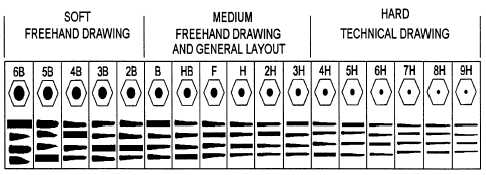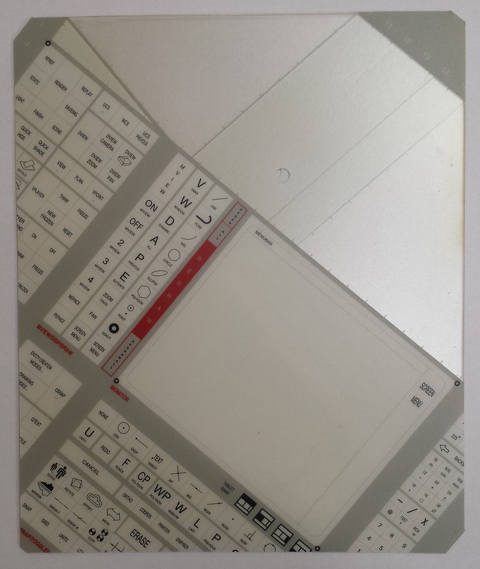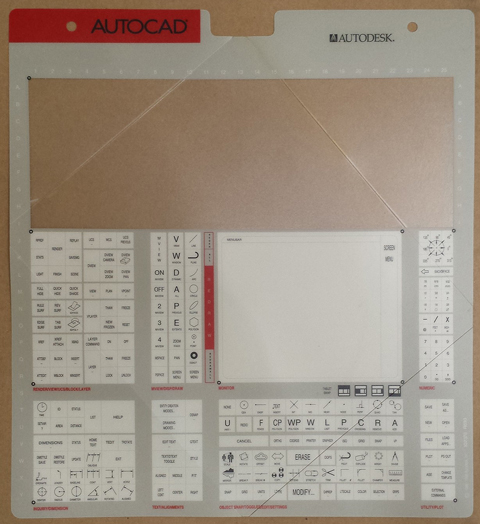Knowledge
Being the best you can be for your firm calls for you to refine and zero in on the items that bring the most value. A thorough knowledge base is essential. The knowledge base must be so ingrained and integrated into your being that it become second nature. You just know the answer. You know about the area of discussion and you have a well thought out perspective. It may not be the only perspective out there, but it comes from pondering and analyzing the information that you have. The point is to focus on the user and what they need to know/learn. You share that knowledge because you have it. You do not focusing on the knowledge base itself. Tech Managers are not here to collect information and store data. We are here to pass it on.
The gathering of knowledge does not lead to boasting either. You should know a lot, but you should not shove it in people faces. When you pass on information/knowledge, it should empower others to get their jobs done, not show off what you know. The excellent tech manager leads from a solid knowledge base, without having to draw attention to it.
It is ever expanding. It is constantly growing because you feed it. You read and discuss. You ask questions and make a note of the answer. You should still be excited to get a new tip. To see something that you had not seen before.
Knowledge is your foundation. Gather it all the time.
I collect old books. Not rare books or expensive books, just old, used books. I love the smell of a used book shop. I love finding unique items that I think are interesting (others may find them dull). I have a lot of old bibles, dictionaries and encyclopedias. I tend to like technical/reference books. I have and extensive collection. Nothing overly impressive. Just things I like. I select them based on many factors. The binding, cover, graphics inside, content, topic, outdated perspectives and more.
Since it is Throw Back Thursday, I decided to post on this topic with a quick reference from one of my finds.
The Hardness of Lead in your Pencils. For artists, this is still a current topic. For drafters, not so much. But if you are ever in need of knowing which lead is harder or softer… here you go.
I purchased the seventh edition of the Standard Handbook for Mechanical Engineers (c) 1967. It has a wealth of great info, like (nerd warning) Heat Transfer calculations, Fluid and Solid Mechanics, Surfaces and volumes, Copper wire resistance, Vibration effects, Geometry and Trigonometry.
This was inside the cover of a book I bought. Written by a prior owner of the book.

Here is a chart of the same info – from draftingmanuals.tpub.com

Way back in 2008 I began a series that I want to continue. It was on the topic of adding value by being the best you can be for your firm and users. I covered several topics and here are the links:
Do You Add Value? – The Position
Do You Add Value? – More on the Position
I will pick up this series again next week and continue to develop the topic.
I once had the opportunity to listen to a fire investigator talk about uncovering the means, methods and motives behind arsonist activity. It was a wonderful talk about how she researched and looked for subtle clues on the starting location and spread of a fire and how accelarants may have been used. Accelerants are substances or combinations of materials that accelerate the development of a fire. It was very informative and made me think later about CAD and BIM (as most things do).
Are there any accelerants for CAD or BIM? What are some things that make work, tasks and progress move faster?
Everyone wants things to move faster. Get the job done. Don’t delay. Make it happen now. The pressure to move faster is always there. Project deadlines, client requests, construction timelines, and so much more can demand that you move faster and faster.
So what is a CAD or BIM Manager to do? People might expect you to make things work without glitches. Make systems faster. Motivate design teams to move quicker. Find a shortcut to make production move.
What can make things move faster?
Hardware
If you are working on outdated hardware, the quickest way to make things move faster is to spend some money on upgrades. Management may not want to hear that, but you need to remind them of the demand that current software makes on hardware. The price of a new machine will quickly be recouped in a faster productive environment where the PC is not straining to keep up with the design development. Even if Management does not want to (or cannot) make upgrades, you should mention it all the time. Keep it in the front of their minds.
Software
Right behind updating hardware to gain more speed is upgrading software. But only if it is a few releases back. The reason is because the impact of learning curve might undermine initial acceleration. But if you are a few releases back, the gains of new tools can negate this impact and you can accelerate soon after the upgrade. Software developers will tout the advantages of speed embedded in the new release and often it does move faster, but the reality might be that old user habits negate some of the speed increases generated by software. This does not apply to pure software only efforts, like file saves, generating 3D, rendering, exporting and such.
People
This might be the main way to speed things up… working with people. Things like training and providing tips and tricks. Creating an environment where sharing what is learned makes everyone faster. Listening to complaints about speed and addressing them. Having ad hoc discussions on how to make things faster. Finding the person that seems to move quicker around files or models and finding out what they do differently. Documenting what you find. Share it with all.
Energy and Enthusiasm
Just making the environment that you work in more positive and uplifting will help things move faster. Lighten the mood. Play music. Share stories about the weekends. Get to know your people. Greet each morning with vigor… Even when the going gets tough. Build a team mentality. Help each other out. Set small targets for progress and then celebrate when you achieve them.
Focus and Mission
Having a unified goal allows people to excel. Keeping them focused on the target and moving in unison progress the project quicker. It keeps people from getting bogged down in the weeds. It frees them up from the tyranny of overload. Focus is the near term targets and Mission is the grander theme of your efforts. By keeping the overall mission in play, you remind folks why we are here. It is not just a job. It is helping others and the firm to succeed. It is serving your client with integrity. It is moving toward achieving something on a grander scale.
By nudging your team in a direction that appears more downhill than uphill, you can increase their speed, expand productivity and reach farther and fast than before.
Some firms have no trouble allowing their CAD/BIM/Tech Manager to grow into the best manager and leader they can be. (see prior post on the Tech Manager title). Some firms seem to constrain, deny, divert, circumvent and otherwise undermine the effectiveness of the Tech Manager. They do not let the person expand to fill voids in tech oversight. They limit the impact and input of those that they need to actually empower.
Here are a few ideas on how to let your Tech Manager grow.
Let them be an Innovator 
I am positive that they have many ideas on how to improve productivity. Allow them to share those ideas and press them forward. Extend to them a little time to test and pilot some of their ideas to see if they will resonate with others on your team. They may have bottled them up because of push back or naysayers. Don’t let that happen. Come along side and encourage others to try a new way of doing things.
Allow them to be a Trainer
Most of them have done informal training and some formal training in the past. Expand their reach by nudging them toward formal training of your team. Set up some training time for them to share the innovative ideas that they have. Let them show others how it might be done. Don’t interrupt impromptu training sessions that happen on the fly during the day. When you see them happening, wave others over to get involved and listen in.
Let them be a Leader
When tough times come, they will have ideas about how to get through them and avoid them in the future. Encourage them to step forward. Ask them to help. Give them room to clean things up. Let them take charge when things go wrong. Follow their lead.
Let them be a Unifier
Many managers want to get everyone rowing in the same direction. When they put guidelines in place, then direct people to follow them. Having a unified process for doing things goes so much farther than every person doing things their own way. Steer them toward that one target and method for getting there.
Let them get Training
They train others so let them get trained also. Allow them to read. Let them search the web. Give them time to meet and discuss tech issues for design tools. Provide them with some travel dollars or gas money and some company time to meet up with others. Approve road trips to vendors and trade shows.
By investing in these managers, you invest in your entire firm. You will soon see benefits as they share knowledge and more with your staff.
As I outlined in the last issue of AUGI Magazine, I have started using the term Tech Manager. I use this as an all inclusive title for CAD, BIM, CAM, CAFM, 3D Design, Makers and so many other “manager” titles. I think the term “tech manager” embodies the breadth of duties and responsibilities that have grown past CAD, embraced BIM and fully encompass design, production, manufacturing, fabrication and management using Autodesk and other technical design tools. The areas of influence and impact for this position often bleed into all areas of technology use within a firm. It includes skills and talents on the technical side, the art of management, the coordination of production, the guiding of projects and the oversight of people.
I will still use CAD Manager and BIM Manager and other titles, but wanted to move toward a broader embrace without having to list all of the titles associated with the areas you all oversee.
What was the most advanced tool that Autodesk ever created that was folded?
Way back when… In the days when tablets were a hot ticket for CAD Users, everyone wanted one. Autodesk responded to this demand by providing the Tablet Menu below. Folded and included in the box with the install media. Just unfold it, lay it over the tablet and calibrate it for use. Then you would be so much more productive just by picking the command from the tablet.
Copyright notice says 1986-1992.
The big red bar next to the white area is the Redraw command.
Folded to fit in the box…

Unfolded for productive work…

This folded productivity tool was the rage… and you thought that the origami icons were the first use of “folding” by ADSK.
Bring Energy and Enthusiasm
When you take on tasks and projects, do it with gusto. Truly enjoy your work. Make your efforts in some way… fun. We all like to do the things that we naturally have talent in. We love the things that fill us with pride and accomplishments. Getting things done is enjoyable. Enjoying things while you get them done may not always be easy.
When working with others, make sure that you are not putting out negative vibes that bring everyone down. Not every task is exciting, but every task can be done with some measure of vigor. And when you approach each task with a positive outlook, it is contagious. People will like working with you.
Working on exciting new projects gets everyone invigorated to do their best. It is not hard to get people involved in the fun, new and exciting efforts. A CAD Manager needs to move every project forward in such a manner as to make them inviting to others.
No one likes to slog through boring tasks, but you can find ways to make them more enjoyable. Not every task expands your horizons. Not every project is a ground breaking effort. Here are a few tips that might help make boring into a blast and routine into rambunctious:
Make each step a success. Even when you have a large amount of redundant work, you can celebrate the milestones of getting 10% done. Then shoot for 25%. Then make the next 25% get done quicker.
Find ways to automate. Look for ways to make something that is drudgery into dynamics by automating some portion of the work. See how much you can script out or program into the software. See who can come up with the best idea for making things run faster.
Make it a contest. Divide the work among the team and make it a race (but don’t sacrifice quality). See who can move toward the goal in less time. See who can find and fix more errors. See who can duplicate successful methods on the grandest scale.
Start conversations about the future. When you get this job done, what can you do next. What is this fix or modification going to open the doors to? Can what you are working on actually boost your technology curve by opening other doors to high tech?
Transfer the knowledge. Define lessons learned and see how you might apply them to other areas of your work. Document the best of the best. Tell others what you are finding that might improve processes elsewhere.
Calmness – Inside and Out
Rudyard Kipling may have said it best… way back in 1895… in his poem “If”. Was he thinking of Tech Managers?
If you can keep your head when all about you
Are losing theirs and blaming it on you;http://en.wikipedia.org/wiki/If- – read more
Sound familiar? I am sure that it does to most of you. There are times when everyone seems to think that the entire systems is falling apart and that you should have prevented it. There are times when everything that others try to do to fix things, jsut makes them worse.
Then you arrive… bringing calmness when things get tough.
A CAD/BIM Manager has to remain calm and reduce the stress level of everyone involved. How do you project calmness?
First you have to actually be calm. Internally you are confident that you can fix the problem, or get people back on track quickly. You know how to dissect troubles and find the root cause. You can make things better. If you are not the calm type… work on that first. start researching ways that you can remain cool as others heat up.
Then you have to have the outward expressions of calmness. Here are a few:
You take on relaxed mannerisms – not tensed up. You are not grabbing things from people or nudging them out of the way. Your shoulders are relaxed. Your breathing remains regular.
You use methodical approach – not just trial and error. You plan your researching steps and march through the plan. You quickly triage the problem and define possible solutions. You do not overlook the obvious (“is it plugged in?”)
You provide options. You let others know that they can do other things while you work on the problem. You define the largest looming deadline and work out a method to meet the deadline in other ways. (try another machine, send the plots to another plotter, etc.)
You defuse negative talk that travels down the “what if” path. Not letting long term conclusions be drawn from the current short term situation. (“if we miss this deadline…”). You calmly refocus conversations back to productive processes.
You don’t jump to conclusions. The methodical approach you are taking will get you through. Just stay the course.
You keep people informed. Let others know what you are going to do. If you leave the scene, let people know you are going to check on something and when you expect to be back. (“I need to check the server, I will be back in 5 minutes”). If you are gone longer, let people know or send someone back to the trouble spot to let them know. Texting works great for this now days.
You make sure folks know that you have a Plan B. (“I am going to try restarting the service on the server. It will take 10 minutes. If that does not work, I am going to restart the entire server and contact IT about the issue to get them involved.”)
You let them know you are making progress. And if you make small gains, let them know that the whole process is not fully restored yet, but that they can start using specific portions. This is a measured restoration that allows progress while you are working on a full restore.
By remaining calm and projecting a calm exterior, you will comfort everyone that is ramping up the stress levels. Stay cool.

